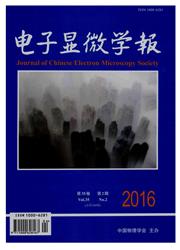

 中文摘要:
中文摘要:
目的 采用激光共聚焦扫描显微镜(CLSM)技术观察上行性泌尿感染引起的急性肾盂肾炎中细菌在膀胱肾脏的定殖,探讨疾病发生的机制。方法 在雌性小鼠建立荧光标记细菌引起的急性肾盂肾炎感染模型,感染后3 h收取小鼠膀胱,感染后6 h、24 h和48 h分别收集小鼠肾脏,采用细菌涂板检测肾组织细菌含量,利用CLSM观察荧光标记细菌的分布情况,并通过CLSM进一步研究荧光标记细菌对原代培养的肾小管上皮细胞的作用。结果 感染早期细菌主要通过黏附膀胱上皮组织进一步入侵肾脏;感染后6 h肾脏的细菌负荷最重,随后感染逐渐减轻;通过CLSM精确观察到细菌在肾脏皮质的定殖,并定量分析不同时间点肾脏中定殖的细菌数。同时通过CLSM观察到在大肠杆菌J96的作用下肾小管上皮细胞骨架的形态结构。结论 成功建立荧光标记细菌感染的急性肾盂肾炎模型,确证细菌定殖于肾小管管腔内,细菌对肾小管上皮细胞间紧密连接蛋白具有破坏作用,为探讨急性肾盂肾炎的发病机制提供更直观的形态学依据。
 英文摘要:
英文摘要:
Objeetive To observe the colonization of uropathogenic Escherichia coli, which induced kidney inflammation by ascending infection in mice, using confocal laser scanning microscope (CLSM) in order to explore the pathogenesis of acute pyelonephritis. Methods Kidney infection was induced in C57BL/6 female mice by bladder inoculation of rhodamine-labeled uropathogenic E. coli J96. Mice were sacrificed after infection at different time points of 3 h for bladder specimen, 6 h, 24 h and 48 h for kidney. Bacteria loading in the kidney were analyzed by agar plate assay. The distributions of labeled bacteria in frozen sections of bladder and kidney, as well as the interactions between bacteria and primary renal tubular epithelial cells (PTECs) prepared from naive mouse kidney were analyzed by CLSM. Results E. coli invaded to kidney ascendingly at early stage of infection through adhering to bladder epithelium. The bacteria loading in kidney reached a maximum value at 6 h after infection,and then declined gradually. The CLSM observation resulted in an accurate process of bacteria colonization even in kidney Cortex, and bacteria loads in tissue sections were counted. Meanwhile, microscopic analysis presented the construction and morphology of renal epithelium after E. coli J96 infection. Conclusion The mouse model of acute pyelonephritis induced by rhodamine-labeled uropathogenic E. coli is successfully established. Using this model,the localization of E. coli at the apical (luminal) surface of renal tubules can be observed by CLSM. We further confirmed that the tight junctions among PTECs are destroyed by bacteria, which will provide more morphological evidences for the pathogenesis of acute pyelonephritis.
 同期刊论文项目
同期刊论文项目
 同项目期刊论文
同项目期刊论文
 期刊信息
期刊信息
